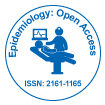Nosso grupo organiza mais de 3.000 Séries de conferências Eventos todos os anos nos EUA, Europa e outros países. Ásia com o apoio de mais 1.000 Sociedades e publica mais de 700 Acesso aberto Periódicos que contém mais de 50.000 personalidades eminentes, cientistas de renome como membros do conselho editorial.
Periódicos de acesso aberto ganhando mais leitores e citações
700 periódicos e 15 milhões de leitores Cada periódico está obtendo mais de 25.000 leitores
Indexado em
- Índice Copérnico
- Google Scholar
- Sherpa Romeu
- Genâmica JournalSeek
- SegurançaLit
- Acesso à Pesquisa Online Global em Agricultura (AGORA)
- Centro Internacional de Agricultura e Biociências (CABI)
- RefSeek
- Universidade Hamdard
- EBSCO AZ
- OCLC – WorldCat
- Texto completo do CABI
- Cabine direta
- Publons
- Fundação de Genebra para Educação e Pesquisa Médica
- Euro Pub
- ICMJE
Links Úteis
Diários de acesso aberto
Compartilhe esta página
Abstrato
Music: The Journey from Neural Entertainment to Therapy
Shashivadhanan Sundaravadhanan
Music has been intricately linked to humanity since times immemorial. Initially believed to be a pleasurable activity, there has been a paradigm shift in understanding of this mysterious entity. During ancient times music was thought to enhance ones physical, mental, spiritual and social health. This applied also to unborn child as is evident in the garbhasanskaras from ancient Indian texts. Last decade has witnessed fierce research in providing objective validation of this age old myth. Researchers have concluded that in addition to providing neural entertainment, music also has restorative and healing powers. So impressive are the results that a new branch of therapeutics has emerged called Neurologic Music Therapy. Reviewing the current body of evidence, an attempt has been made to get to the origin of music and trace its evolution and entry into therapeutics from the perspective of Neurosciences. In spite of scientifically tempered enthusiasm and technological back up there are many questions which remain unanswered. The Indian Music Industry which is currently worth 10 Billion Rupees is set to double its revenues by 2019. Why “The Gangham style” from Korea or the “Kolaveri di” from India goes on to have millions of “likes” worldwide, remains a mystery. Precise localization of the neural substrate of music at anatomical, physiological and molecular level still remains unclear. Neuroscience seems to be poised to unravel the mystery of music. Only time will tell whether sound will become music or vice versa.
Diários por Assunto
- Agro e Aquicultura
- Alimentação e Nutrição
- Bioquímica
- Ciência da Computação
- Ciência de materiais
- Ciencias ambientais
- Ciências Clínicas
- Ciências Farmacêuticas
- Ciências gerais
- Ciências Médicas
- Ciências Sociais e Políticas
- Ciências veterinarias
- Economia e Contabilidade
- Enfermagem e cuidados de saúde
- Engenharia
- Engenheiro químico
- Física
- Genética e Biologia Molecular
- Geologia e Ciências da Terra
- Gestão de negócios
- Imunologia e Microbiologia
- Informática
- Matemática
- Química
Revistas clínicas e médicas
- Anestesiologia
- Assistência médica
- Biologia molecular
- Cardiologia
- Cirurgia
- Dermatologia
- Diabetes e Endocrinologia
- Doenças infecciosas
- Enfermagem
- Fisioterapia e Reabilitação
- Gastroenterologia
- Genética
- Hematologia
- Imunologia
- Medicamento
- Medicina Reprodutiva
- Microbiologia
- Nefrologia
- Neurologia
- Odontologia
- Oftalmologia
- Oncologia
- Ortopedia
- Pediatria
- Pesquisa Clinica
- Pneumologia
- Psiquiatria
- Toxicologia

 English
English  Spanish
Spanish  Chinese
Chinese  Russian
Russian  German
German  French
French  Japanese
Japanese  Hindi
Hindi